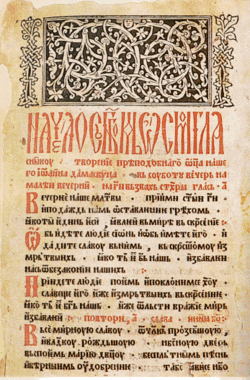Early art in
Montenegro stems from the larger, more dominant Greek culture. Stone sculptures
were spread throughout this small country, but many of them have been destroyed
throughout the years due to war and earthquakes. Their karst landscape leads to
large deposits of marble. However, their marble tends to not be of the soft
quality of other deposits that are preferred for most sculpting purposes.
Handicrafts were
also an important part of Montenegrin folk culture. Needlework and other
textile art went into decorating the home as well as traditional clothing and
costumes. Terracotta bowls and engraving arts were also found around the
country.
Montenegrins have
long history with painting. It’s one of the arts they gravitated toward as a
means of expression to what it means to be a Montenegrin. Artists who wanted to
study art seriously often traveled abroad to cities such as Belgrade, Zagreb, Paris,
and other art centers in Europe. There, they would learn to hone their skills
from the best and bring it back to their country where they would add in a
certain Montenegrin flair to their work.
Some of the more
notable painters to come from Montenegro—and especially from the Old Royal
Capital of Cetinje—include Boris Dragojevic (surrealism, hyperrealism), Milo
Milunovic (impressionism, cubism), Dimitrije Popovic (painter, sculptor, art
critic), Vojo Stanic (painter, sculptor), Petar Lubarda (painter, art
professor), and Dado Duric (illustrator, engraver, sculptor).
Although the
official language of this country is Montenegrin, most literature is written in
Serbian. Some of the earliest literary works (that we know of) date back to the
12th century with the Chronicle
of the Priest of Duklja. During the Renaissance period, the city of Kotor
became the center for a revived literary scene.
Montenegro made
history when they developed the first state-owned printing house located in the
city of Cetinje. This printing press was first put to work in 1494 where Oktoih, the first book in Church
Slavonic, was printed. (Incidentally, it was also the first book to be printed
in Cyrillic in this area of Europe.) During this time, monasteries were one of
the main places that housed manuscripts, mainly because there were only a
select group of people who were learned and most came through the church.
Epic folk poetry
was a common genre and many poets carved out their own voice and style. One of
the more well-known poets was Petar II Petrovic-Njegos. He was most notably
known for his epic work “The Mountain Wreath” (1847). He paved the way for
other poets such as Jevrem Brkovic, Balsa Brkovic, and Borislav Jovanovic.
There are several
authors who have hailed from Montenegro and/or Serbia. Modern literature spans
an array of genres and subjects and is typically written in Serbian. A few
notable authors to look for include Branimir Scepanovic, Igor Luksic, Dragana
Krsenkovic Brkovic, Milovan Djilas, Mirko Kovac, Miodrag Bulatovic, and
Borislav Pekic. You can read about these authors and their works in more
details here (it’s a great blog for modern world literature).
Up next: music and
dance







No comments:
Post a Comment